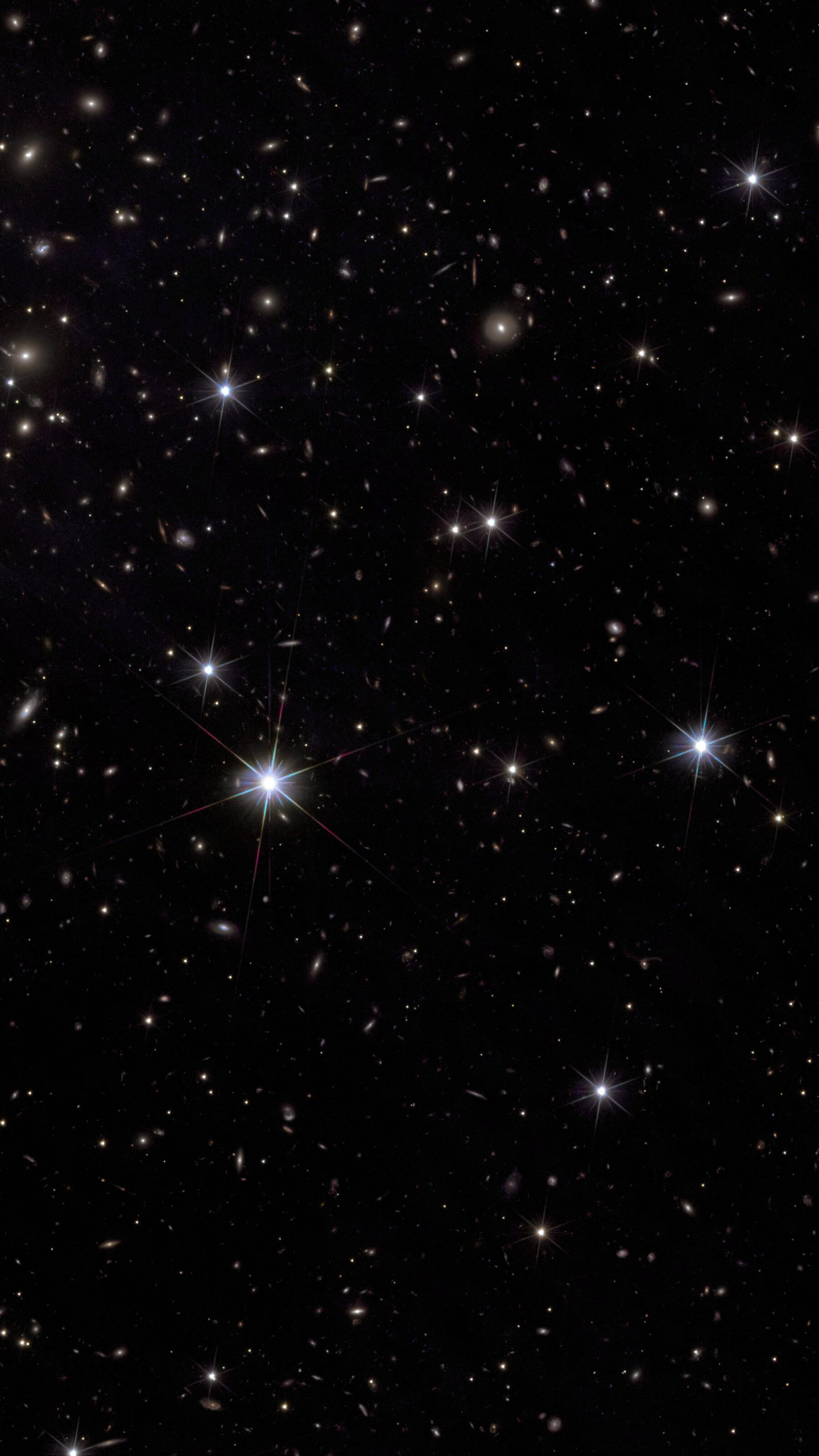
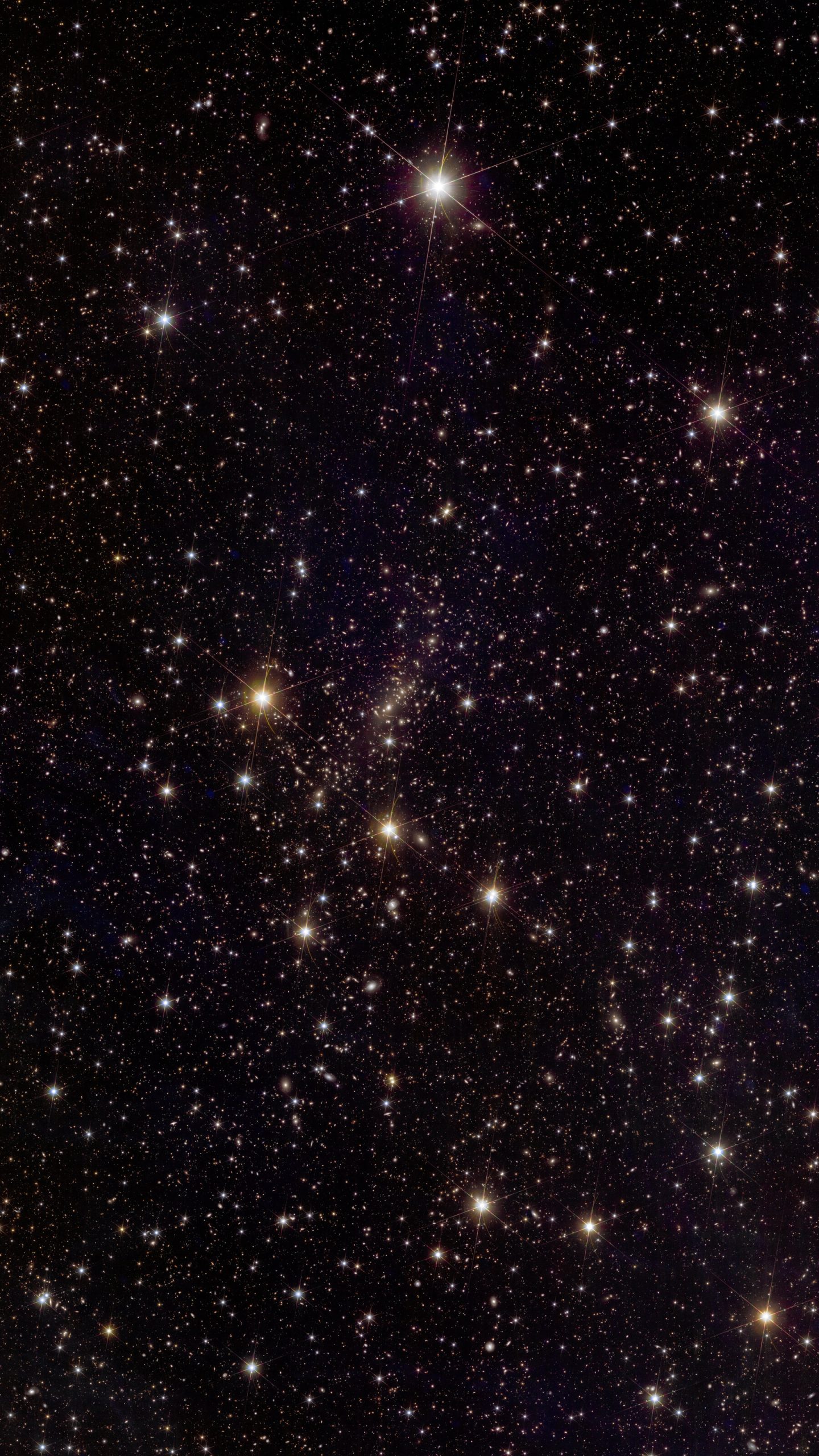
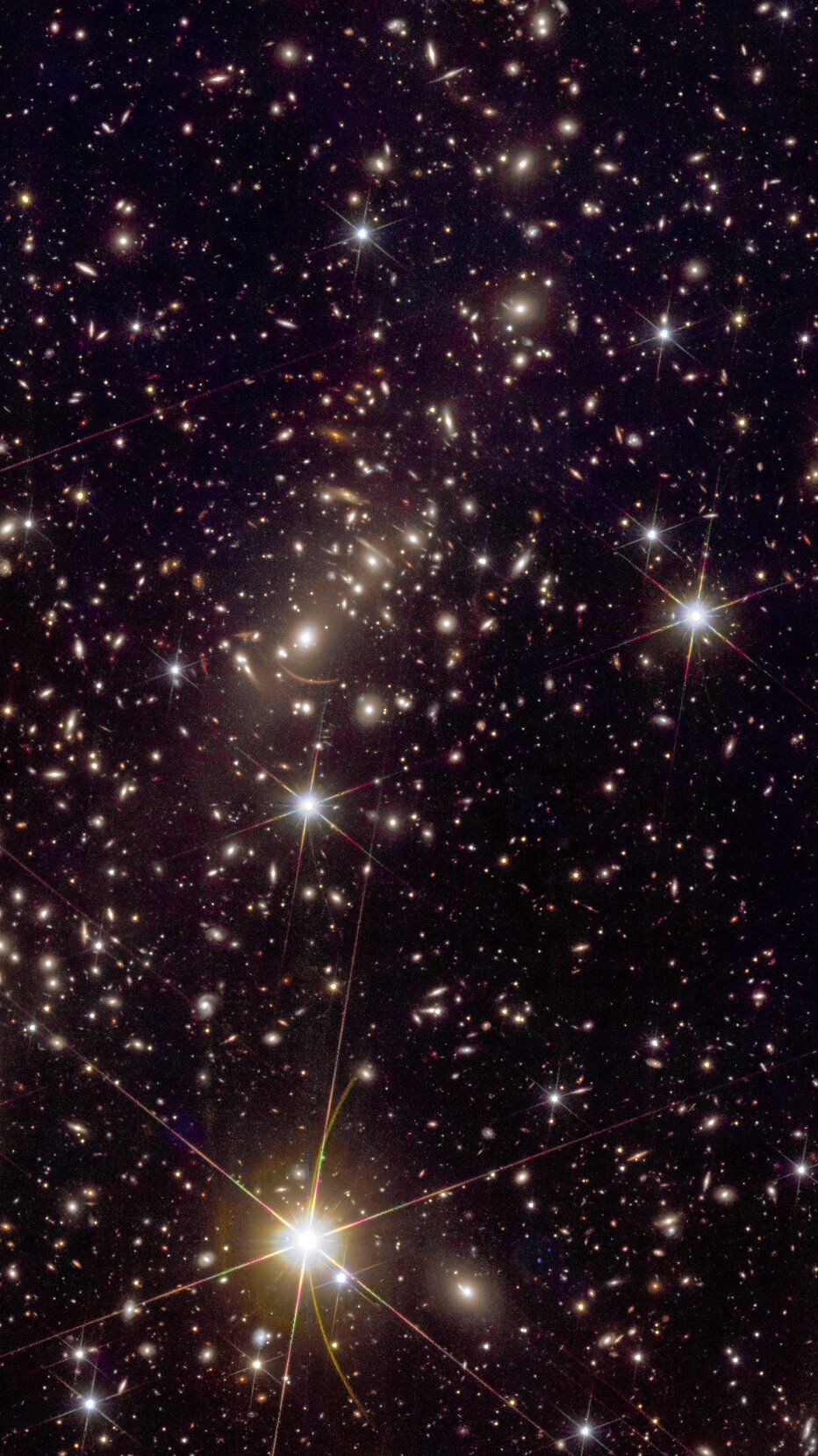
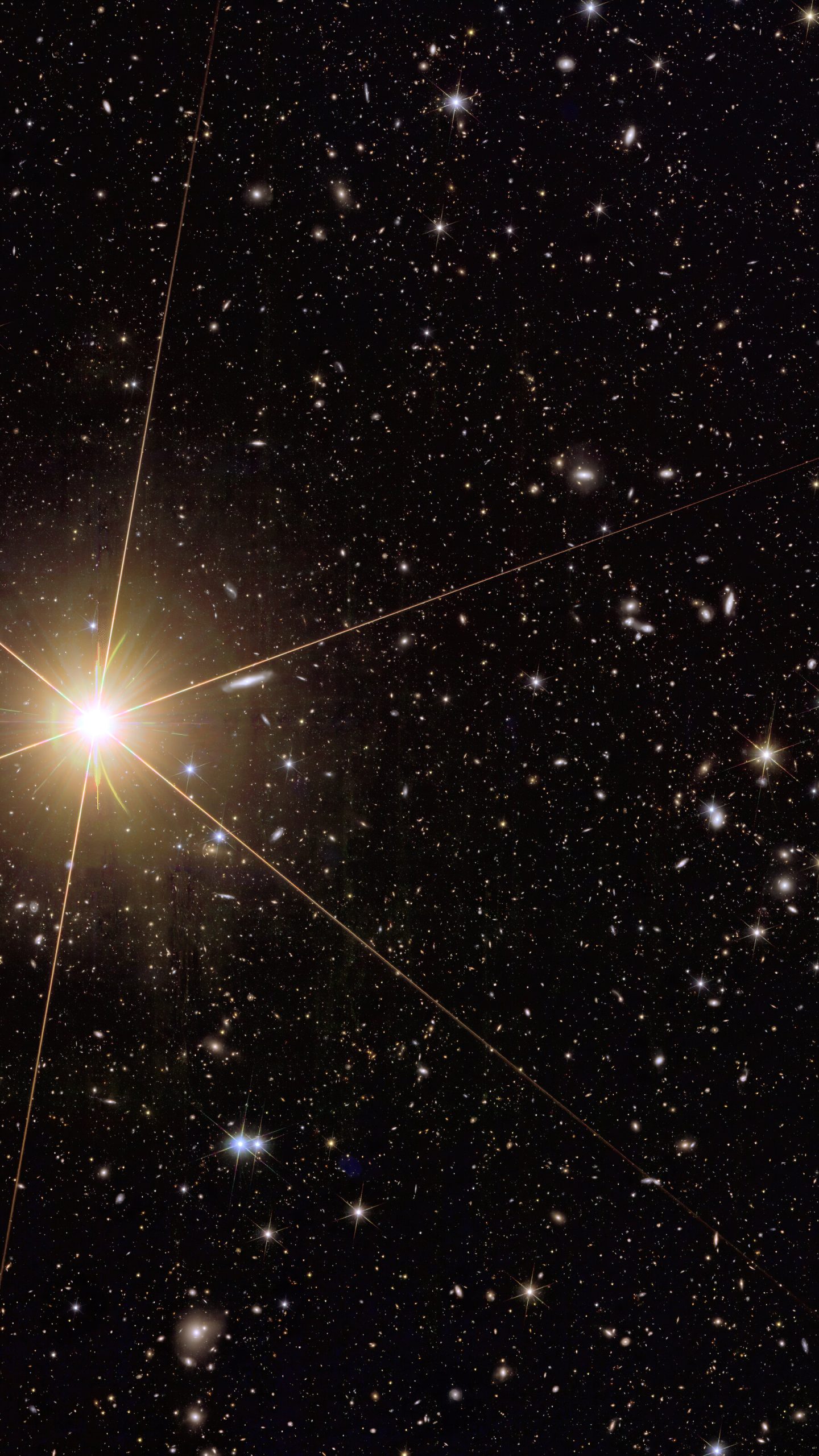
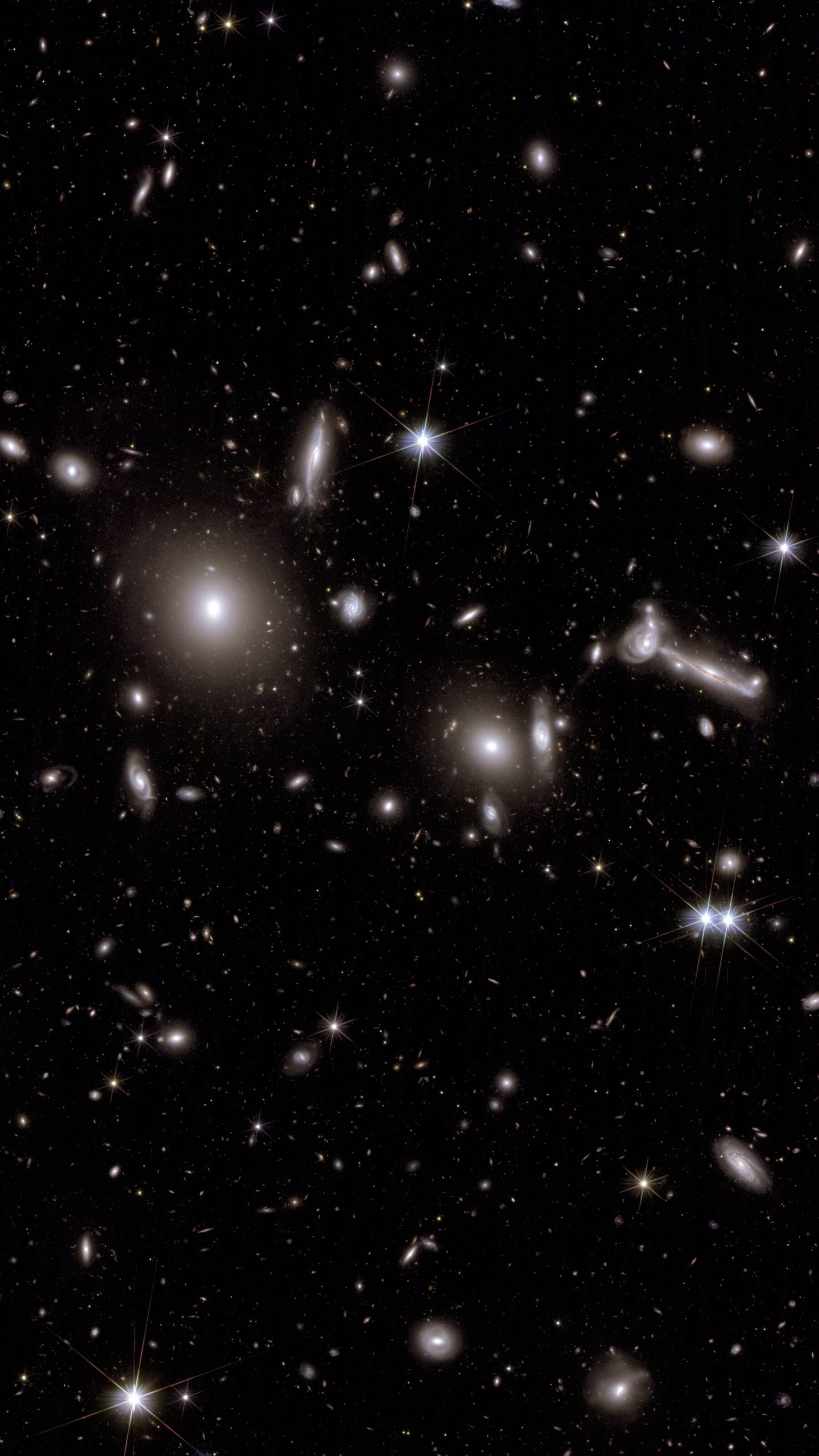
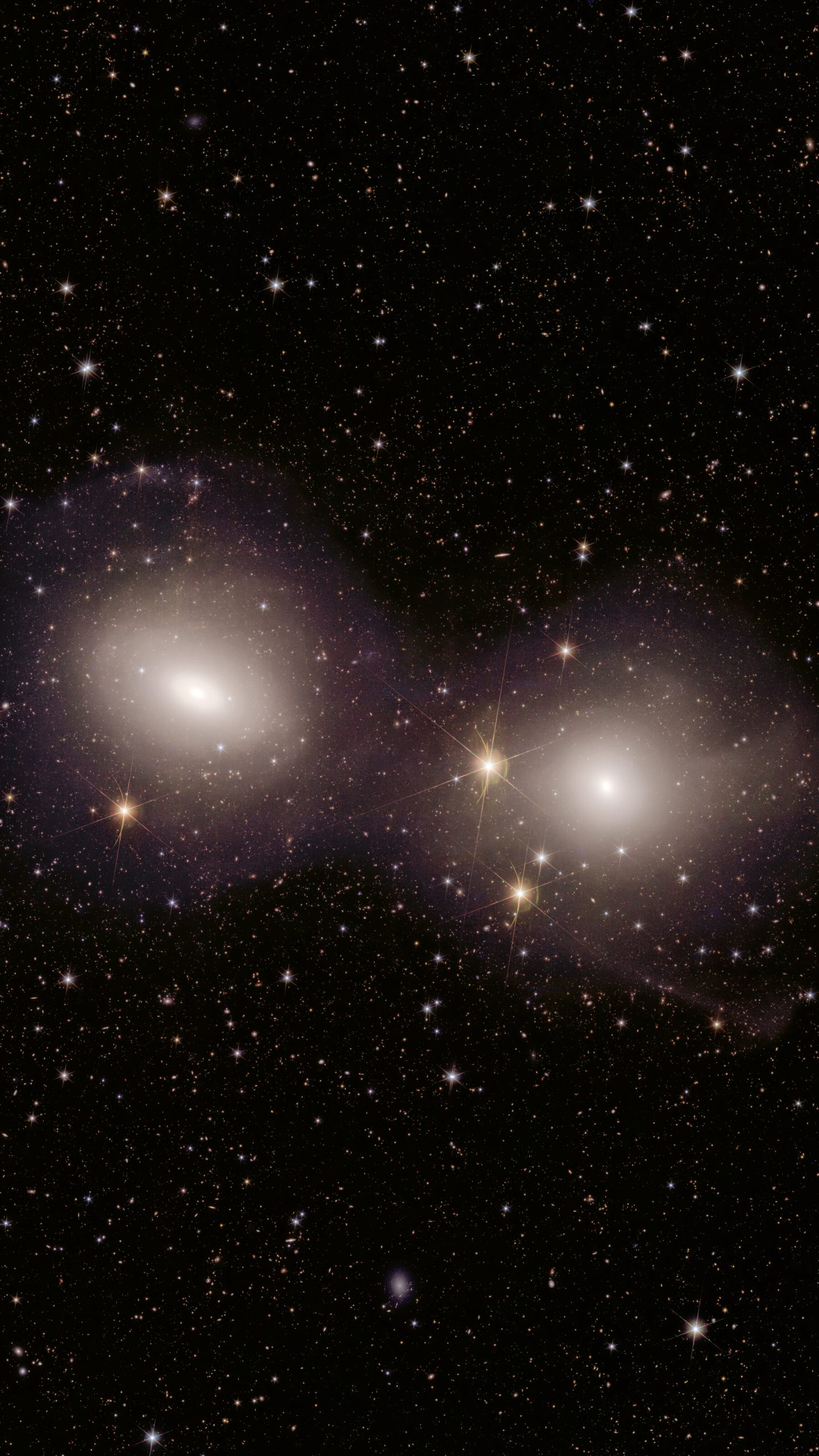
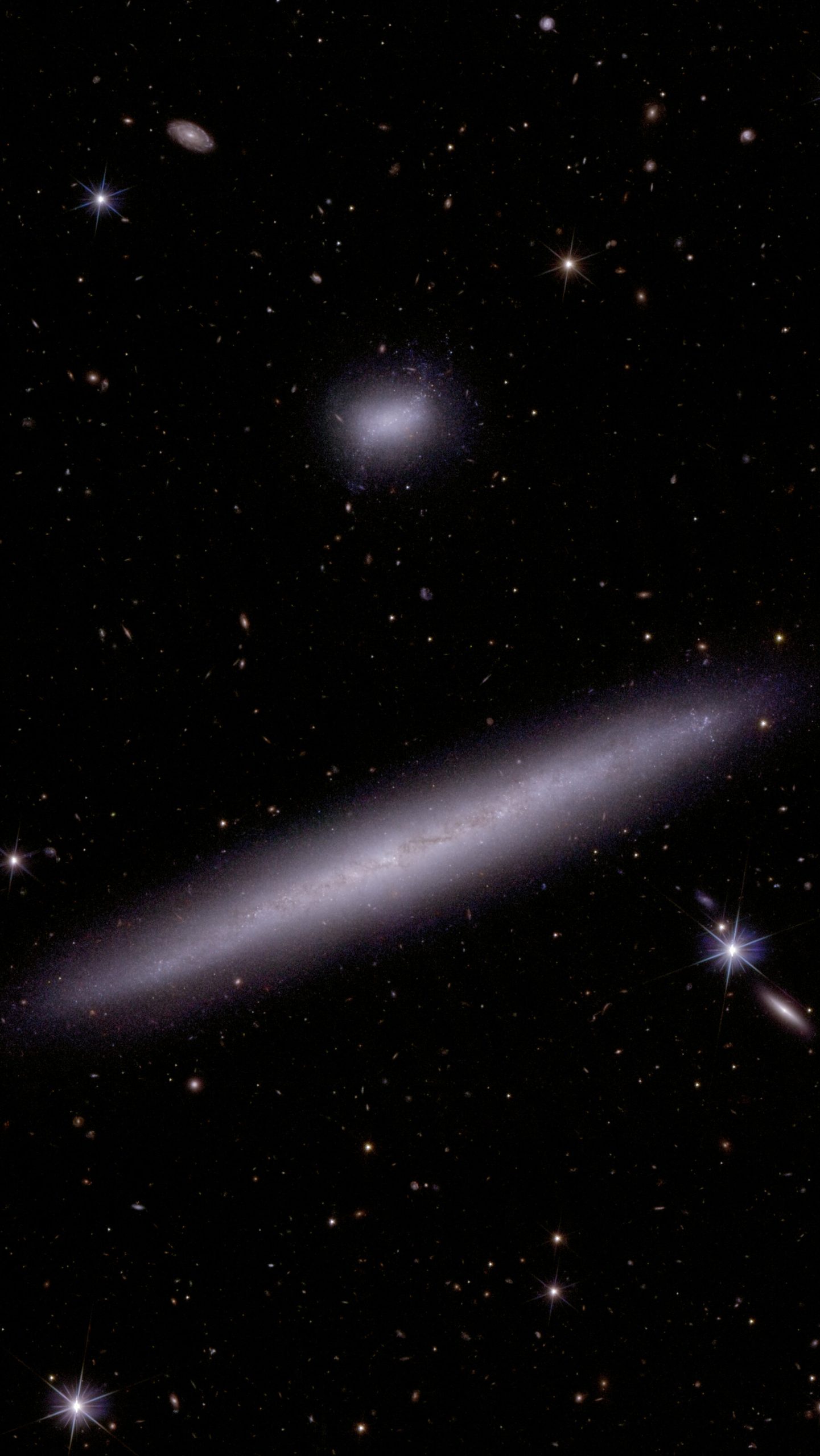
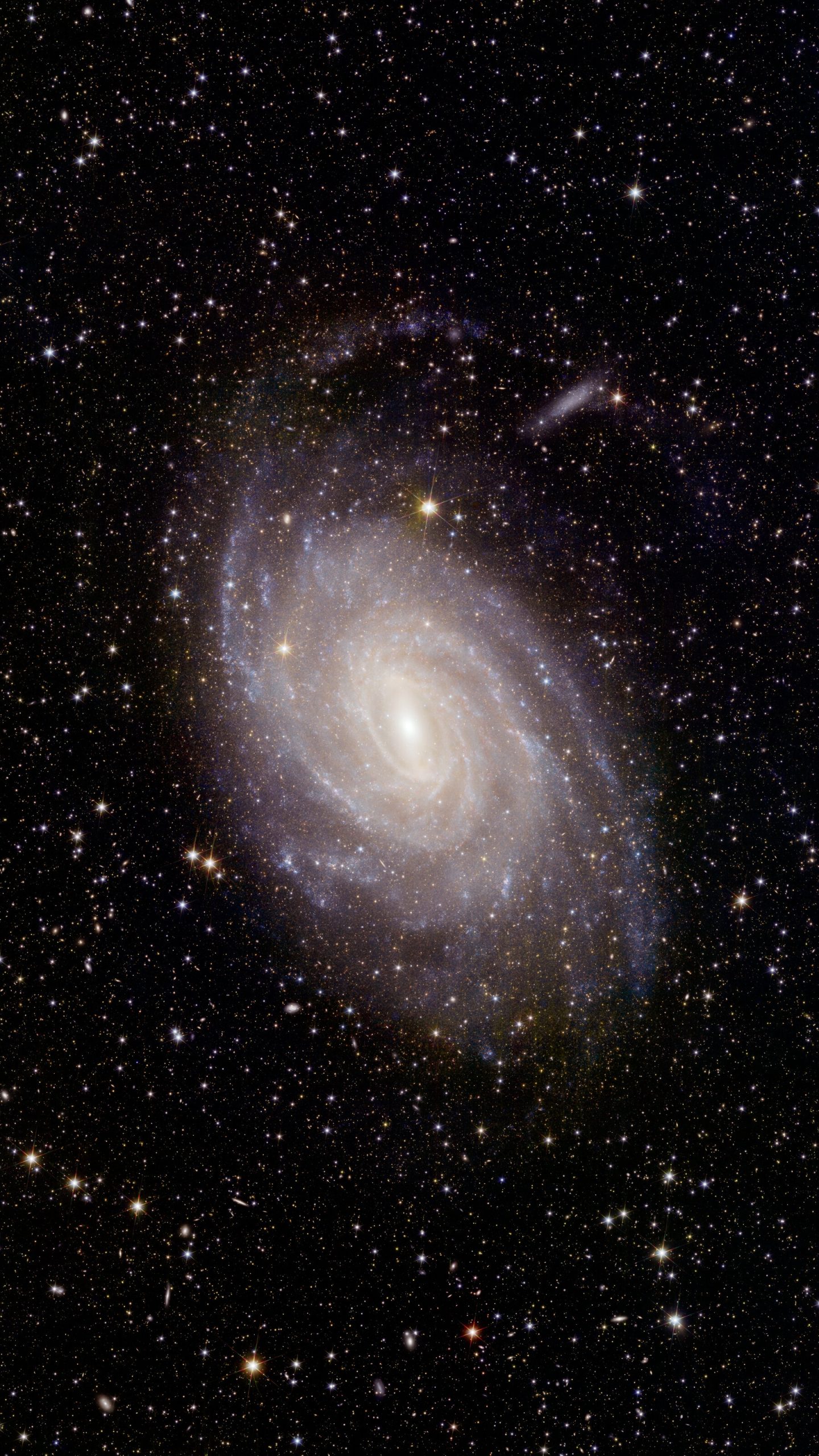
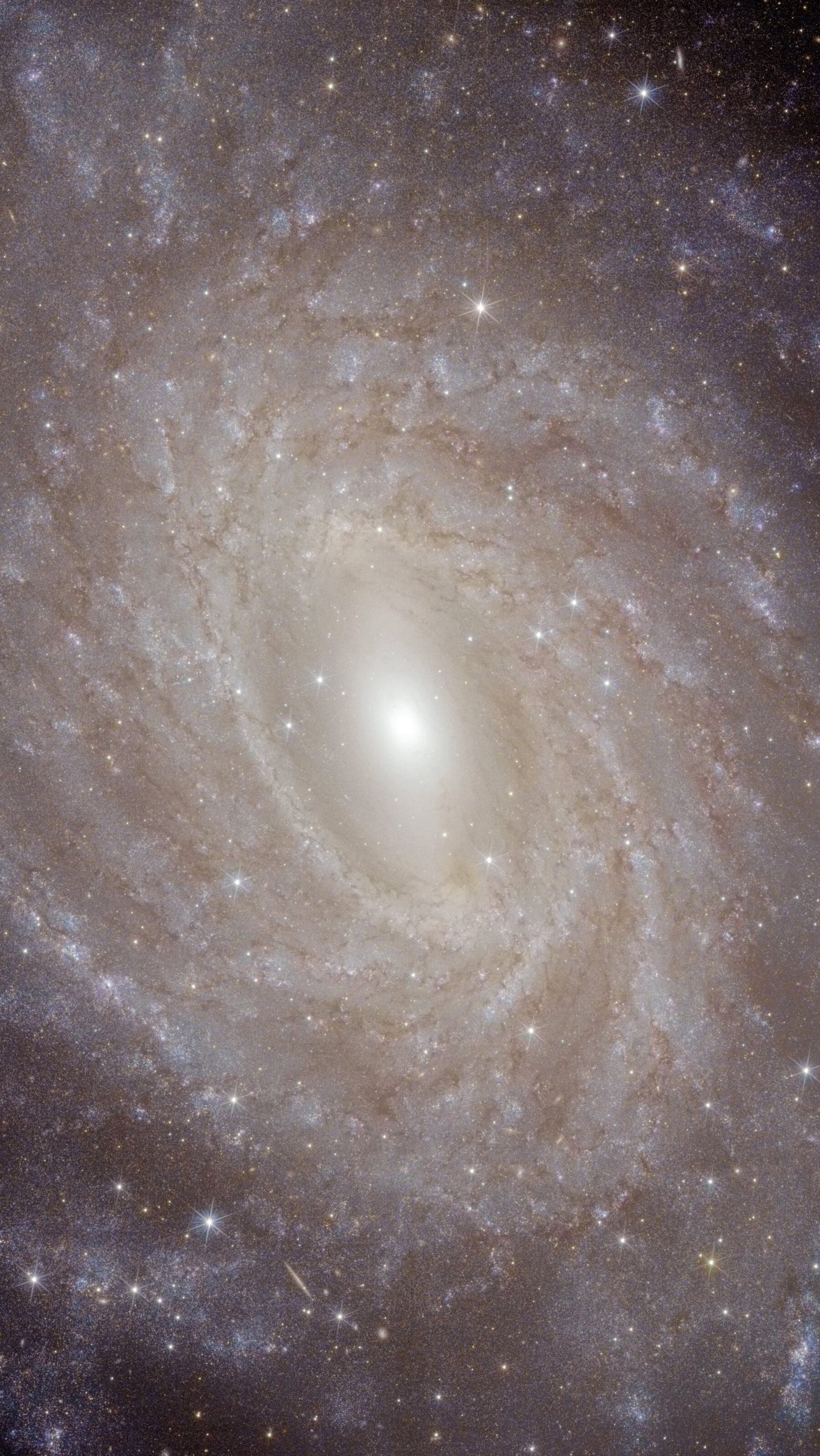

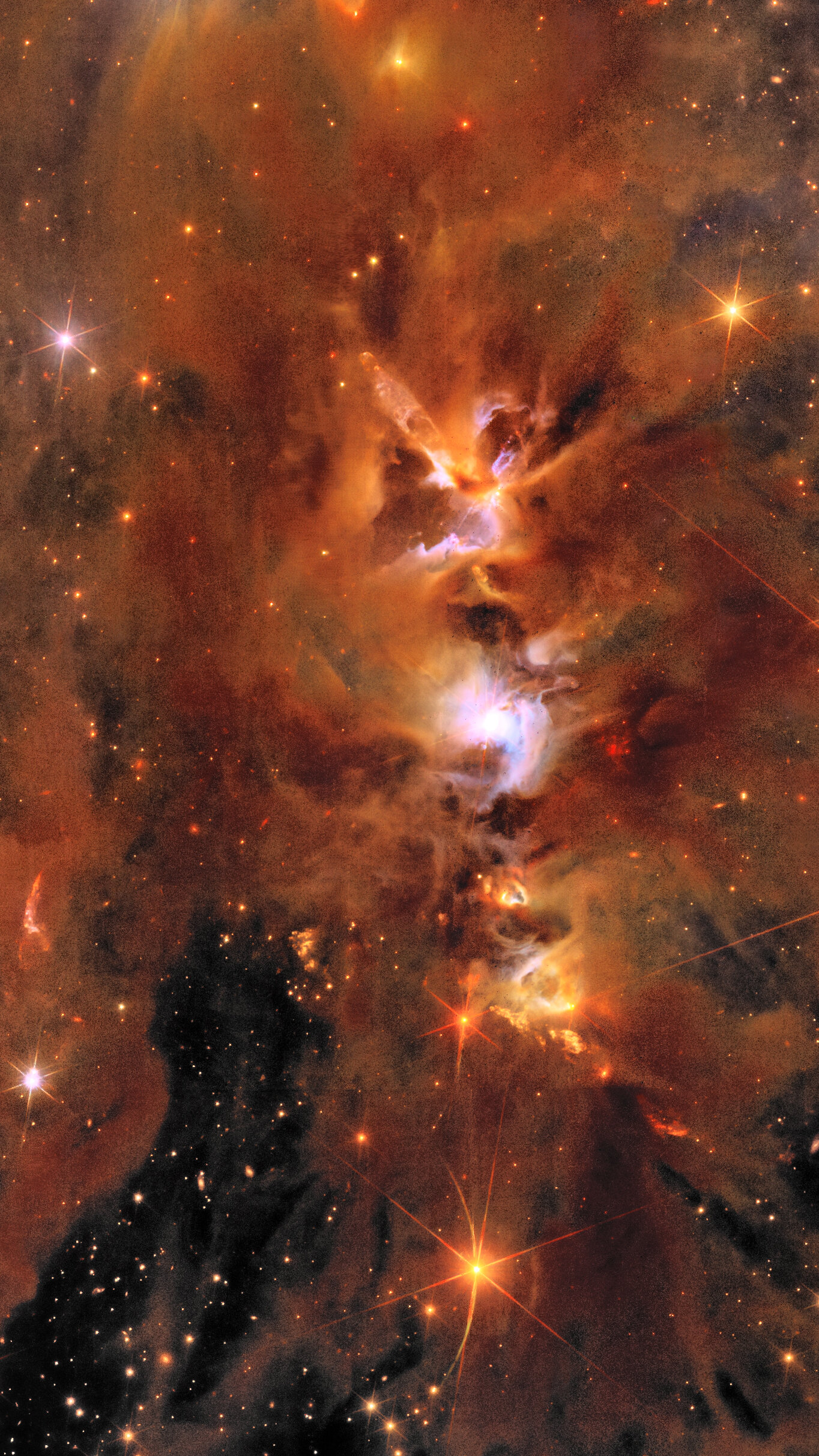
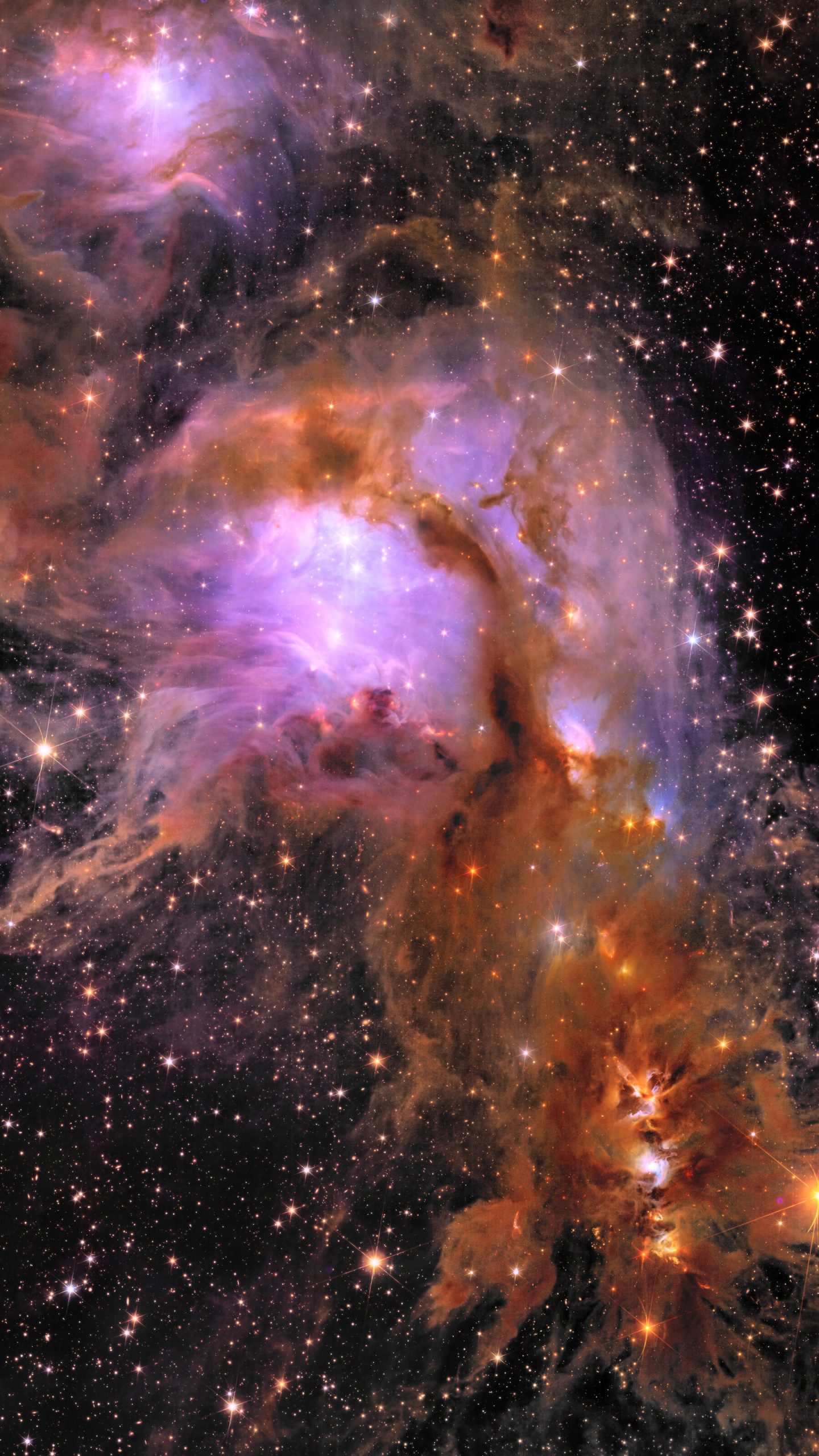
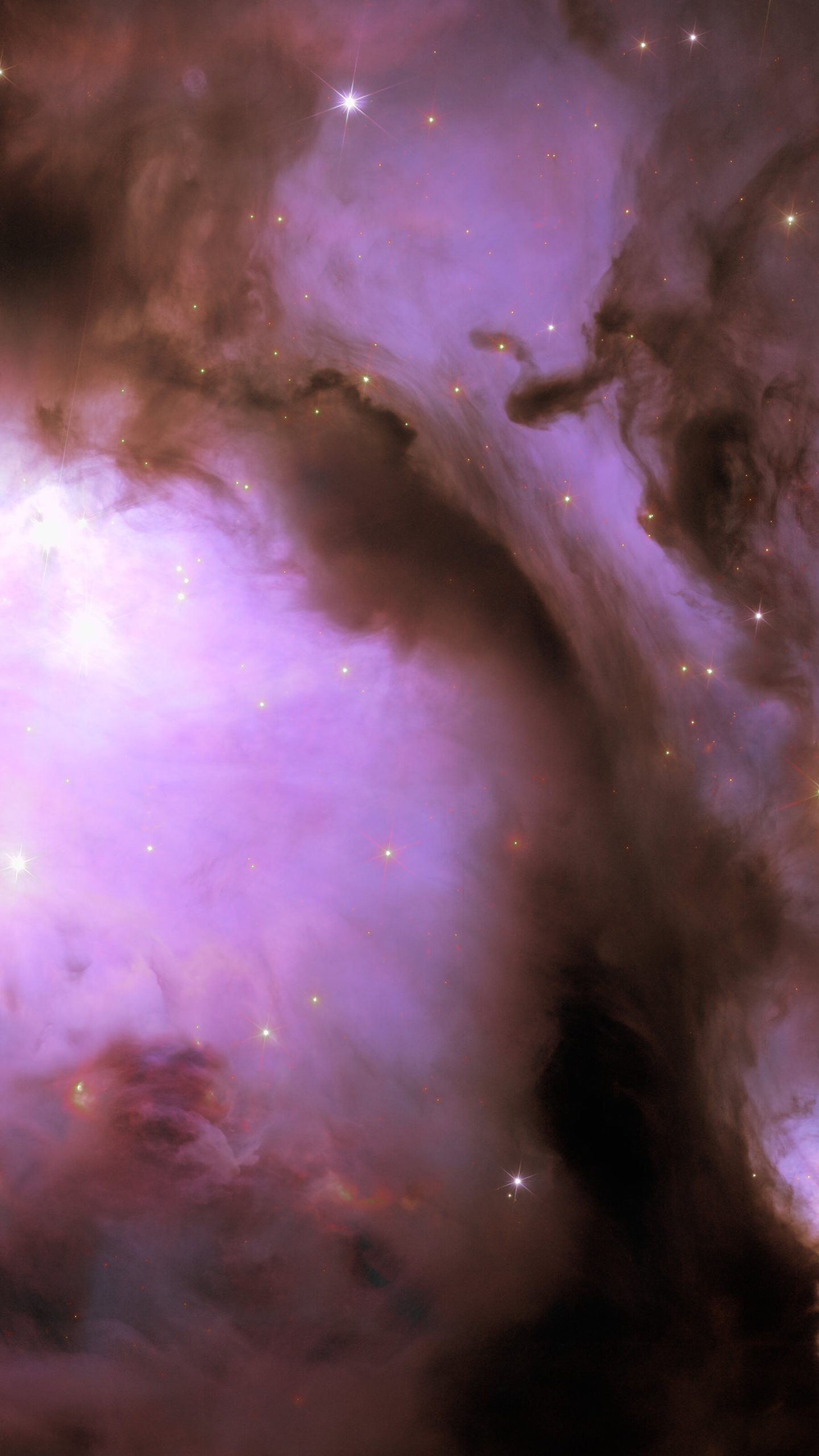
Scanning the Dark Universe, Euclid Finds Scenes of Cosmic Light By Katrina Miller
Euclid, a European Space Agency telescope launched into space last summer, finally showed off what it’s capable of with a batch of breathtaking images and early science results released Thursday.
The telescope will help astronomers make sense of two of the universe’s greatest mysteries: dark matter, the invisible glue clumping galaxies together, and dark energy, the force pushing them apart.
“Before trying to understand what it is, you have to understand how it behaves,” Jean-Charles Cuillandre, an astronomer at CEA Paris-Saclay, said, referring to dark matter.
The mysterious substance makes light bend and distort, an effect known as gravitational lensing. In extreme cases, lensing causes galaxies to appear warped, and can even produce mirror images of a single source.
Euclid caught this effect while peering at Abell 2390, a cluster of galaxies located 2.7 billion light-years away. Ninety percent of the mass in this cluster is dark matter.
Gravity makes dark matter clump together, but dark energy counteracts this effect. Studying the density of dark matter across the cosmos will help astronomers learn how dark energy influences the structure of our universe.
Euclid’s specialty lies in being able to capture wide swaths of sky with impressive detail. Galaxies that appear near bright stars like Beta Phoenicis might be impossible for some observatories on Earth to see, but Euclid’s sharp eyes are able to resolve them.
The telescope’s sensors make it like a net for light, Dr. Cuillandre said. “It captures everything.”
In a series of papers, the Euclid team also shared discoveries of new dwarf galaxies, star clusters and free-floating planets. Astronomers say these show how the mission can reach beyond its core goals.
“We call it legacy science, the things that Euclid can also do,” said Michael Seiffert, a cosmologist working on the mission from NASA’s Jet Propulsion Laboratory.
The telescope snapped these two galaxies grazing each other 62 million light-years away, resulting in diffuse edges and tails.
Interactions like this are common. “It’s very rare to find an isolated galaxy,” Dr. Cuillandre said. “That’s what we’re finding out.”
Euclid took this picture of spiral galaxy NGC 6744, 30 million light-years from Earth.
Interstellar gas and dust coalesce in the rotation of a spiral galaxy, promoting star formation along its arms. Each blue grain in this image is a hot, massive baby star.
A neighboring dwarf galaxy ripped off one of NGC 6744’s arms. Galaxies have scars too, according to Dr. Cuillandre. “They keep a trace of what has happened” over billion-year time frames, he said.
Euclid also focused on Messier 78, a stellar nursery. With its near-infrared vision, the telescope can peer past clouds of gas and dust to reveal the bright blue infant stars hiding within.
The stars spit up protons and neutrons, shaping surrounding dust and other material, not unlike how wind on Earth sculpts our clouds.
Eventually, cavities form around these stars, freeing their light to shine across the universe.
The latest images come from only a day’s worth of observation. “We’re really just getting started,” Dr. Seiffert said.
Scanning the Dark Universe, Euclid Finds Scenes of Cosmic Light
Produced by Antonio de Luca
Images by ESA/Euclid/Euclid Consortium/NASA. Image processing by J.-C. Cuillandre (CEA Paris- Saclay), G. Anselmi; CC BY-SA 3.0 IGO or ESA Standard Licence.
.css-1bymuyk {
border-bottom: none;
}
.css-ui9rw0 {
max-width: none;
}
#in-story-masthead, #masthead-bar-one{
display: none;
}
#top-wrapper { display: none; }
#site-index {
background-color: #fff;
}
.css-123u7tk {
background-color: #000;
}
.css-1e80sr1 {
text-shadow: 0px 0px 7px rgba(0,0,0);
}
.NYTAppHideMasthead header section {
background-color: #000;
border-bottom: none;
}
#masthead-section-label a {
color: white
}
.css-14k4cdv {
color: var(–color-content-primary, #FFFFFF);
}
.NYTAppHideMasthead header section svg,
.NYTAppHideMasthead header section svg path,
.NYTAppHideMasthead header section svg rect {
fill: #fff;
}
body {
background-color: #000;
}
.NYTAppHideMasthead header section {
background-color: #000;
border-bottom: none;
}
.css-s99gbd{
display:block;
width: calc(100%);
max-width: 600px;
margin: auto;
}
.css-at9mc1 {
display:contents;
}
.css-53u6y8{
display:contents;
}
#NYT_ABOVE_MAIN_CONTENT_REGION span,
main#site-content article header h1,
main#site-content article header p,
main#site-content article header time,
main#site-content article .StoryBodyCompanionColumn p,
main#site-content article .bottom-of-article p,
main#site-content article .bottom-of-article p a,
#article-summary {
color: #f5f5f5;
}
#NYT_ABOVE_MAIN_CONTENT_REGION {
display: none;
}
footer {
background-color: white;
}
#bottom-sheet-sensor {
display: none;
}
@media (min-width: 740px) {
#bottom-wrapper {
margin-bottom: 0;
}
#site-index { padding-top: 3rem; }
}
@media (min-width: 600px) {
#site-index { padding-top: 20px; }
}
section h1:first-of-type,
article h1:first-of-type {
display: none;
}
section[name=”articleBody”] p:first-of-type a {
text-decoration: none;
}
.nytapp-hybrid-article h1:first-of-type + div > p:first-of-type a {
text-decoration: none;
}
header div > p {
display: none !important;
}
header [data-testid=”reading-time-module”] {
display: none;
}
p.scrolly-text-0 {
font-size: 1.3rem;
line-height: 1.8rem;
/*font-size: 1.125rem;*/
/*line-height: 1.5625rem;*/
font-family: nyt-imperial, georgia, ‘times new roman’, times, serif;
max-width: 500px;
}
p#scrolly-0 {
font-family: nyt-cheltenham, georgia, ‘times new roman’, times, serif;
font-weight: 400;
font-size: 2.25rem;
line-height: 2.5rem;
margin-top: -60vh;
text-shadow: 0 3px 10px rgba(25,25,25,.8);
}
p#scrolly-0 em {
display: block;
font-style: normal;
font-family: nyt-franklin,helvetica,arial,sans-serif;
text-transform: uppercase;
font-size: 0.875rem;
letter-spacing: 0.05em;
font-weight: 700;
}
p#scrolly-0 strong {
font-style: normal;
display: block;
font-size: 0.9375rem;
line-height: 1.25rem;
font-family: nyt-franklin,helvetica,arial,sans-serif;
margin-top: 1rem;
font-weight: 700;
border-top: solid 1px currentColor;
padding-top: 19px;
}
@media screen and (min-width: 600px) {
p.scrolly-text-0 {
font-size: 1.25rem;
line-height: 1.875rem;
}
p#scrolly-0 {
font-size: 2.9375rem;
line-height: 3.4375rem;
}
p#scrolly-0 em {
font-size: 0.875rem;
line-height: 33px;
}
/*scrolly dark overlay*/
#scrolly-instance-1 > div:after {
content: ”;
position: absolute;
z-index: 1;
width: 100%;
height: 100%;
top: 0;
left: 0;
background-color: rgba(0,0,0,0.2);
pointer-events: none;
user-select: none;
}
/* share tools above sign up for science times*/
.bottom-of-article div[data-testid=”share-tools”] {
display: none;
}
